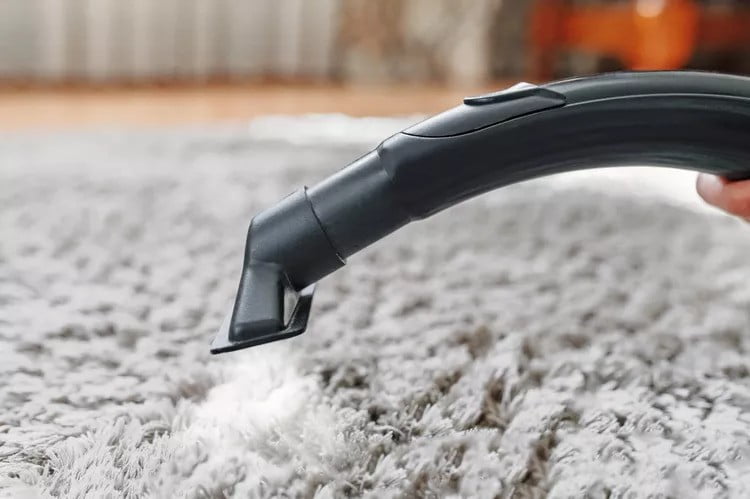Carpets add warmth and comfort to any home, but the heavy furniture we love can leave unsightly marks and flatten our soft flooring over time. Addressing these indentations helps maintain the aesthetic appeal of our spaces and extends the lifespan of our carpets.
This article will guide you through practical strategies to raise carpets flattened by furniture. From understanding the root causes to implementing preventative measures, we’ll equip you with practical solutions to rejuvenate your carpets, ensuring they remain plush and inviting for years.
Understanding the Causes
The issue of carpet flattening stems primarily from the prolonged pressure exerted by heavy furniture. Over time, the weight of sofas, tables, and chairs compresses carpet fibres, leading to the visible indentations we often see.
The extent of the flattening can vary depending on the type of carpet fibre—nylon and polyester are resilient and may bounce back with time. In contrast, wool and olefin fibres might struggle to regain their original form.
Factors such as carpet pile density and fibre twist also significantly affect how susceptible a carpet is to flattening, with higher density and tighter twists generally offering better resistance.
Preventative Measures
Preventing carpet flattening begins with strategic furniture arrangement. Regularly shifting the position of heavy pieces can prevent prolonged pressure on the same spots, distributing wear more evenly. For an immediate solution, consider using furniture coasters.
These broad, flat supports spread the weight of furniture legs over a larger area, minimizing indentations. Additionally, investing in the proper carpet padding is crucial. High-quality, dense padding acts as a shock absorber, protecting carpet fibres from the brunt of furniture weight.
This combination of rearrangement, coasters, and suitable padding preserves your carpet’s appearance and its comfort and durability.
Immediate Solutions to Raise Flattened Carpet
Ice Cube Method

Place an ice cube on each flattened area and let it melt overnight. The slow melting process allows the carpet fibres to absorb the moisture, gradually expanding back to their original shape. The next day, gently lift the fibres with the edge of a spoon or a coin to fluff up the area, restoring its former plushness.
Towel and Iron Method

For deeper indentations, the towel and iron method is highly effective. Lay a damp towel over the flattened area, ensuring it’s not overly wet. Set your iron to a medium heat setting and gently press it over the towel, moving in a circular motion for about 30 seconds to a minute. The steam helps to loosen and lift the carpet fibres. After ironing, use your fingers or a comb to fluff the fibres. Avoid direct contact between the iron and the carpet to prevent heat damage.
Vacuuming Technique

A powerful vacuum cleaner can also revive flattened carpets. Use a vacuum with a brush attachment to gently but firmly go over the affected areas in multiple directions. The suction power helps to pull the fibres upright while the brush detangles and lifts them. For best results, vacuum slowly and repeatedly over the flattened spots, gradually restoring the carpet’s volume and texture.
Deep Cleaning for Long-term Results
Regular deep cleaning can significantly enhance the resilience of your carpet fibres against flattening. For DIY enthusiasts, renting a steam cleaner can remove deep-seated dirt and help lift the carpet pile. However, professional cleaning services are recommended for severe cases or high-quality carpets. Professionals use advanced techniques and equipment to rejuvenate your carpet, ensuring fibres are cleaned and restored to their original height and softness.
Maintenance Tips to Keep Carpet Looking Fresh

To keep your carpets looking their best, incorporate regular vacuuming into your cleaning routine. This prevents dirt from settling deep into the fibres, which can lead to matting and further flattening. Additionally, consider placing area rugs or runners in high-traffic areas to minimize wear and tear on your main carpeting.
Finally, commit to a deep cleaning schedule whether DIY or professional, every 12 to 18 months to maintain the integrity and appearance of your carpet fibres.
Conclusion
Reviving a carpet flattened by furniture requires immediate actions and long-term care strategies. From simple at-home methods like the ice cube technique to professional deep cleaning services, there are several ways to bring life back to your carpets. Regular maintenance, strategic furniture placement, and the proper cleaning techniques can all play a part in preserving your carpet’s plushness and appearance. We encourage you to try these solutions and share your success stories or tips with the community. Together, we can keep our carpets looking and feeling fresh for years.

